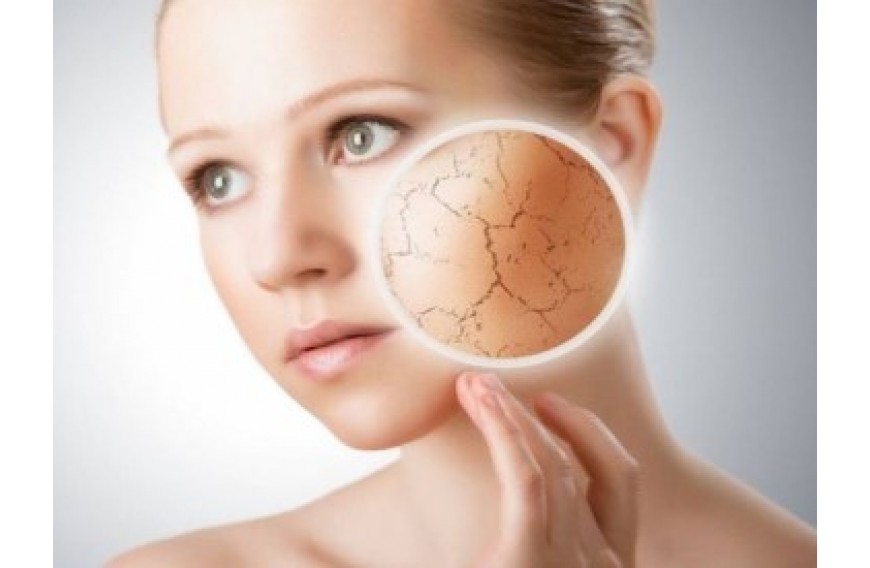Dry skin can suffer from a lack of natural lipids and decreased moisture content. Dryness can range from barely noticeable to severely visible. Problems associated with dry skin are widespread, accounting for 40% of visits to dermatologists. It is essential to care for dry skin promptly, regularly, and appropriately to keep it healthy and beautiful.
Characteristics of dry skin
Dry skin, in comparison to other skin types, has distinct features.
- Roughness or rough patches in some areas.
- Pores are almost invisible.
- Uneven texture.
- Skin is prone to fine lines and wrinkles.
- Lack of radiance or glow.
- Dull, slightly greyish skin tone.
Due to the lack of moisture, dry skin loses elasticity faster, making wrinkles more noticeable.
Refrain from confusing dryness with dehydration- they are entirely different concepts caused by different problems. In the first case, there is a lack of sebum; in the second scenario, there is a lack of water. Additionally, those with dry skin will already have this skin type. In contrast, dehydration can be a temporary condition in any skin type due to various factors, such as inadequate water intake, increased alcohol or coffee consumption, changes in weather, or certain medications.
Causes of dry skin
Let’s understand what makes the skin dry. The causes can be internal and external. External causes include:
- Low humidity in the air indoors
- Weather conditions
- Frequent contact with water
- Aggressive and incorrectly selected cosmetic products
- Regular use of tanning beds
Several internal factors harm the condition of the skin and make it drier:
- Deficiency of vitamins and minerals
- Poor diet
- Stress and an unhealthy lifestyle
- Genetic predisposition
- Inadequate water consumption
- Use of medications
Another cause of pathological skin dryness is kidney disease, endocrine system disorders, skin diseases various allergies. Choosing the right cleansing products, moisturising cream and other products for dry skin are important. A moisture imbalance can lead to disruptions in the sebaceous glands. This can lead to the formation of early wrinkles, as well as pigment spots and other skin problems.
What is the difference between dry, normal, and oily skin?
Skin type remains constant throughout one's life. Dry skin is different from other types. If your skin is thin, has tiny pores, and lacks a greasy shine, that is dry skin. Those with oily skin are troubled by enlarged pores and constant greasy shine and are prone to blackheads, pimples, and acne. Normal skin has a smooth surface, lacks a feeling of dryness or tightness, and blackheads are absent.
As we age, dryness increases and the skin's oiliness can decrease. In autumn and winter, the skin barrier is drier due to the decrease in the humidity in the air, as well as changes in temperature and more frequent hot baths.
How to deal with very dry skin?
Dry skin is classified into dry and very dry. Dry skin is rough, tight, dull-looking, and has minimal elasticity. Very dry skin has the following signs:
- Roughness
- Peeling
- Possible itching
- Coarseness
- Tightness
Very dry skin can lead to insufficient moisture. With age, the activity of sebaceous glands decreases. This is associated with the activity of sex hormones. That is why dry skin becomes even drier, and more wrinkles and fine lines may appear.
If the skin is very dry, radical measures are necessary:
- Moisture the skin from the inside with nourishing products
- Remove alcohol-containing products from your cosmetics bag
- Choose clothes made of natural smooth fabrics
- Exclude allergic reactions
Cleansing is the first and foremost step in care. It is aimed at delicately removing impurities, including dust, cosmetic residues, and sweat. Then a tonic is used, which helps restore the skin's normal pH, and the cream's active ingredients will penetrate the skin's deepest layers. And only after that, a moisturising cream should be applied. It is responsible for skin firmness and hydration. Masks are an easy way to replenish the skin's supply of nutrients.
When dealing with dry skin, it is not recommended to wash with hot water- it can further dry out the skin. If wrinkles appear, it is necessary to use rejuvenating or anti-ageing cream. It helps smooth the depth of more pronounced wrinkles and increases skin density.
Taking care of dry facial skin
Dry skin lacks lipids due to the absence of skin oil. Lipids are necessary for retaining moisture and forming a protective barrier against external factors.
When caring for dry skin, attention should be paid to the choice of products. It is recommended to carefully read the composition of products. Due to the high level of dehydration and dryness, the skin requires maximum moisturisation, so it is necessary to use a variety of products:
- Nourishing cream or oil rich in lipids
- Cleansing milk, foam, or gel, and also mousse, which acts more effectively and gently than micellar water and foam
- Mild scrubs that help remove dead skin cells
- SPF creams for protection against ultraviolet rays
- Moisturising day and night creams
A thick, nourishing cream will be a good "base" for makeup. Thanks to antioxidants and natural oils, moisture will be retained for a long time, and the skin will be protected from external factors. Also, use creams with hyaluronic acid, as well as moisturising wraps and masks. If dry skin loses its elasticity and becomes withered, it means it is severely dehydrated. It is necessary to clean it from dead cells using mild peeling, as well as moisturising masks, wraps for moisturising and restoring the skin, and creams. Nourishing products should contain plant oils, fatty acids, vitamins, and plant extracts.
Replace alkaline cleansing products with gentler ones. It is necessary to help the skin from the outside with particular products and from the inside. To do this, include foods rich with vitamins A, C and E in your diet and maintain a healthy lifestyle.
Each product comes with a description, composition, and application method, so it is worth studying the characteristics of products for dry skin before purchasing. You can also read customer reviews for additional information.
How to take care of dry body skin?
Dry skin can occur not only on the face but also on the body. Temperature changes, hot water, and improperly selected skincare products worsen the situation. Here are a few recommendations that will help adequately take care of dry body skin:
- Apply body lotion/milk/balm
- Moisturise your skin after water procedures
- Don’t stay in the shower for too long
- Choose gentle shower gels and bath products for cleansing
- Regularly treat dry skin on your feet with a pumice stone or file
- Use hand cream at least twice a day
Skincare products for dehydrated skin should contain antioxidants such as vitamin E or C. they help neutralise the destructive effects of radicals that break down lipids.
Dry and cracked skin that feels tight or itchy may indicate a lack of zinc, so look for products that contain it. It is also found in foods such as fish, hard cheeses, and oatmeal. Remember that dry skin loses moisture excessively, so help it with serums or good moisturising creams.
The results of proper care for the skin on the face and body will be noticeable in just a few days. Thanks to properly selected products and their regular use, you can maintain the health and beauty of your skin and prolong its youthfulness.



